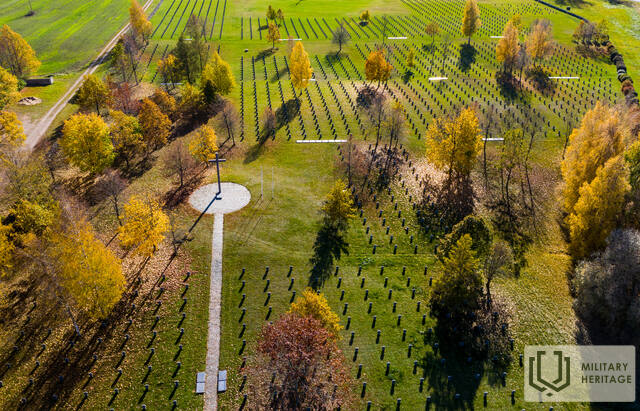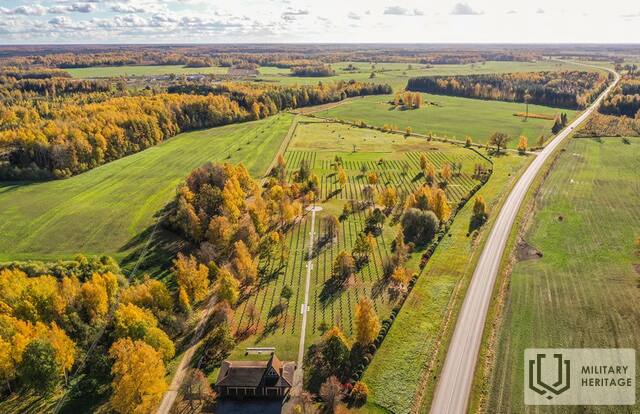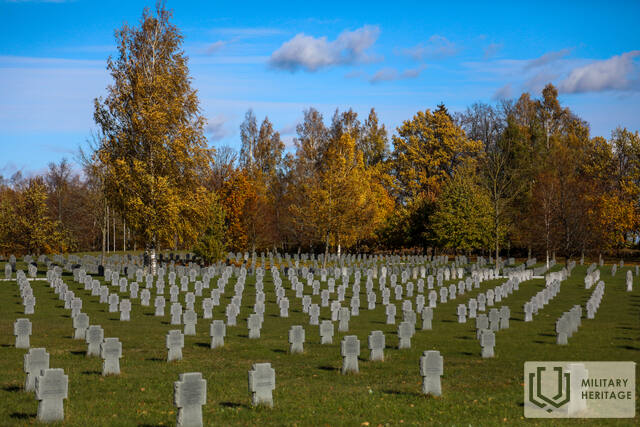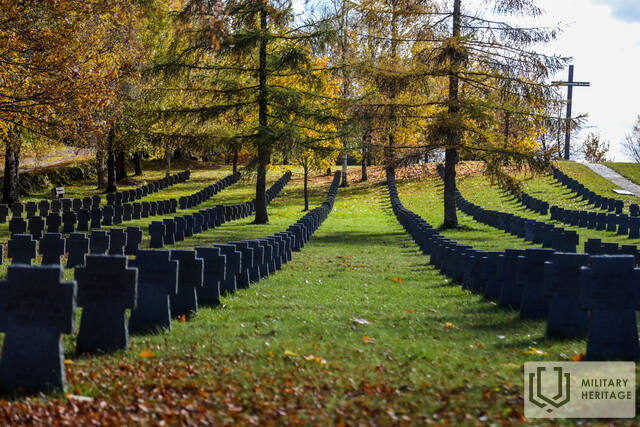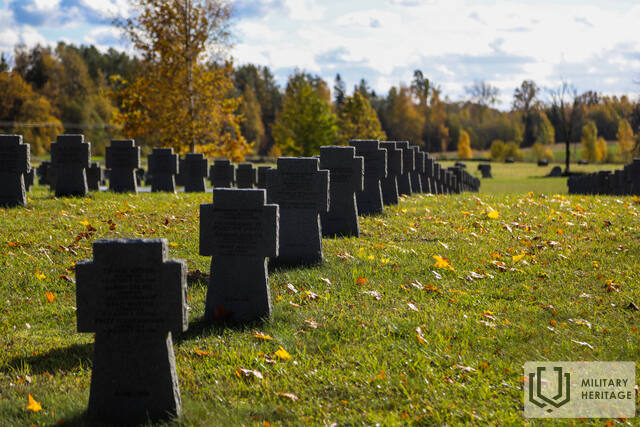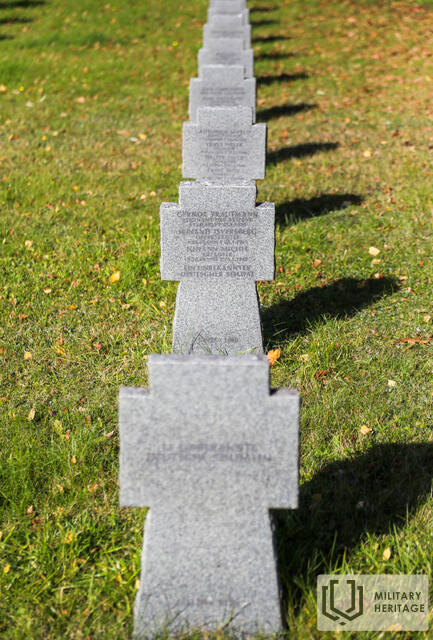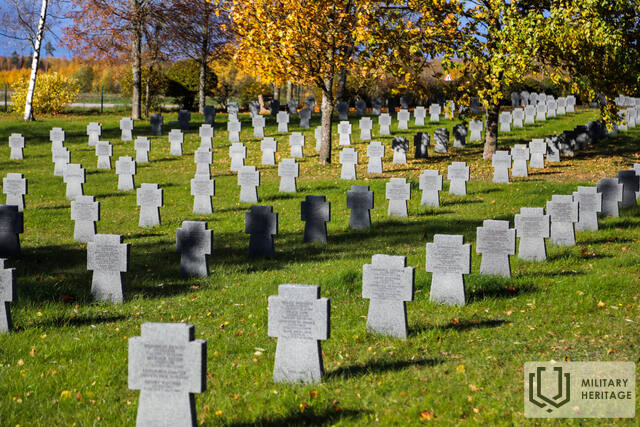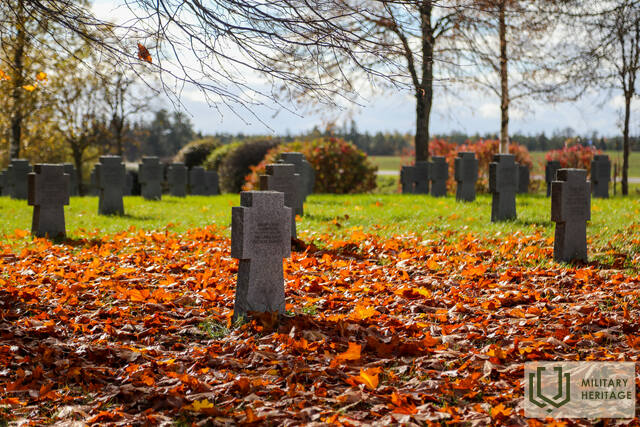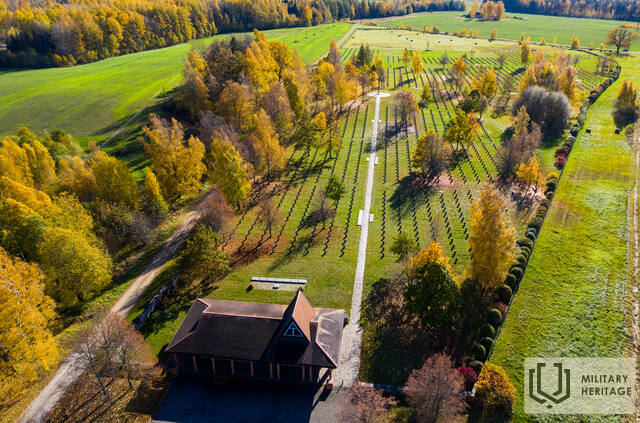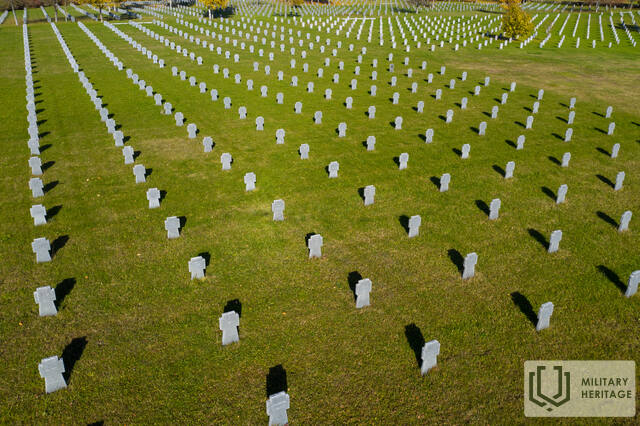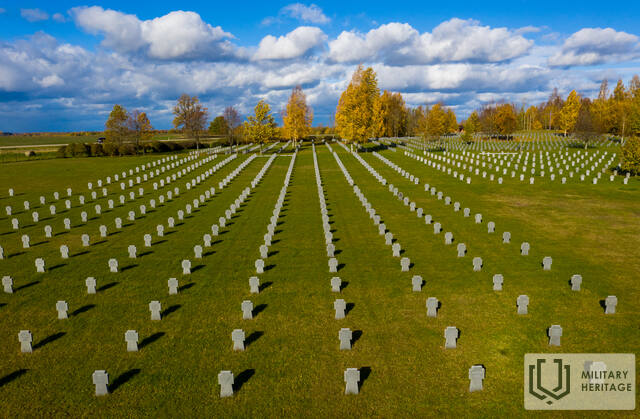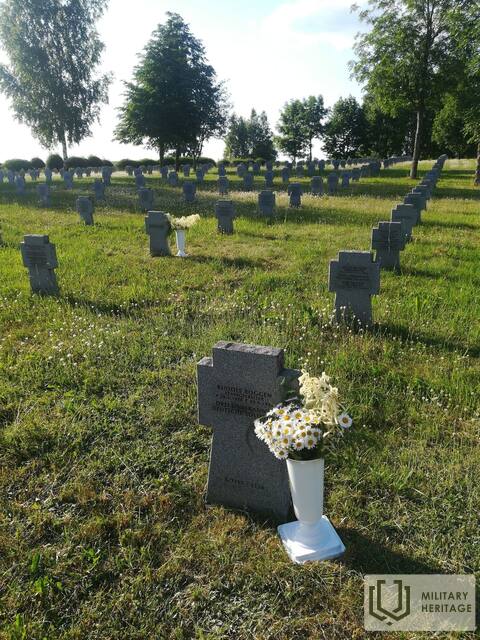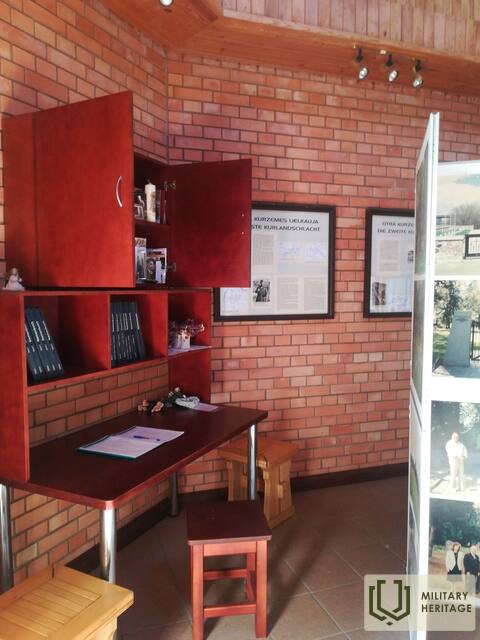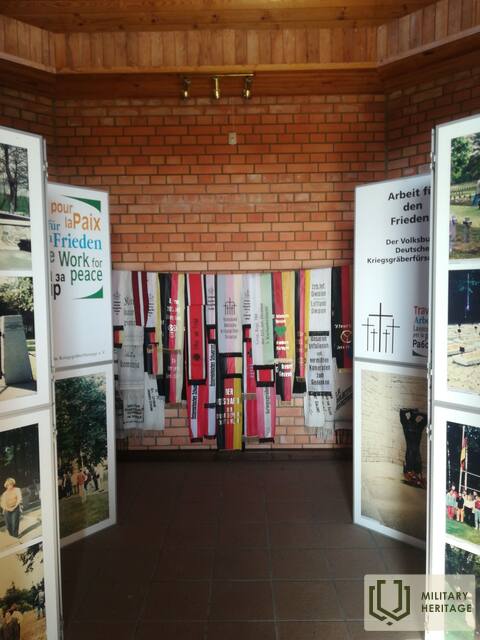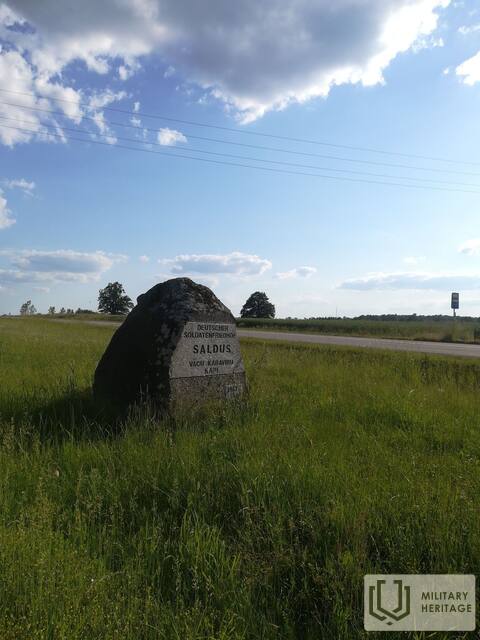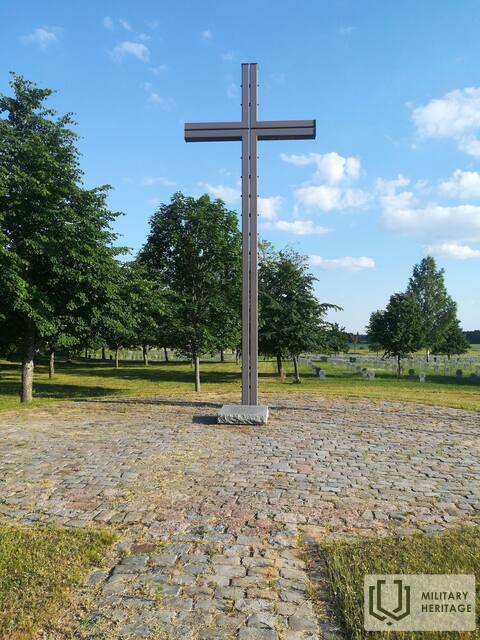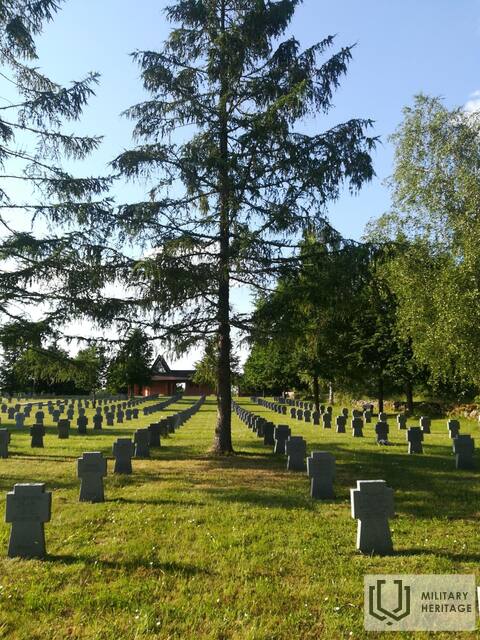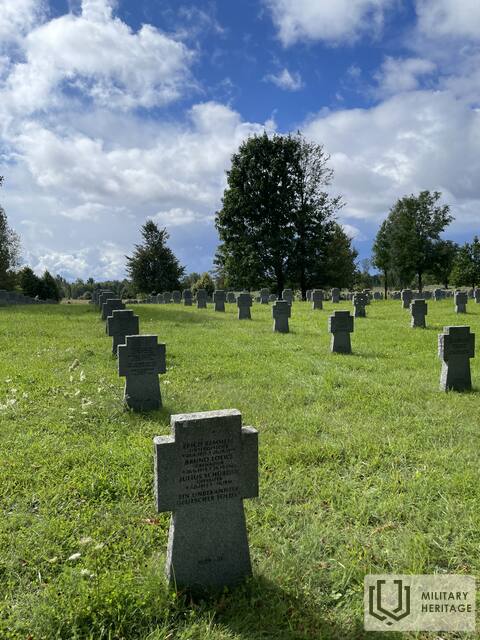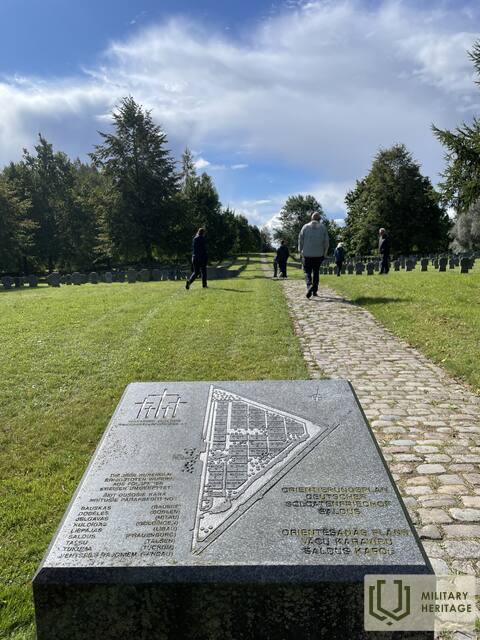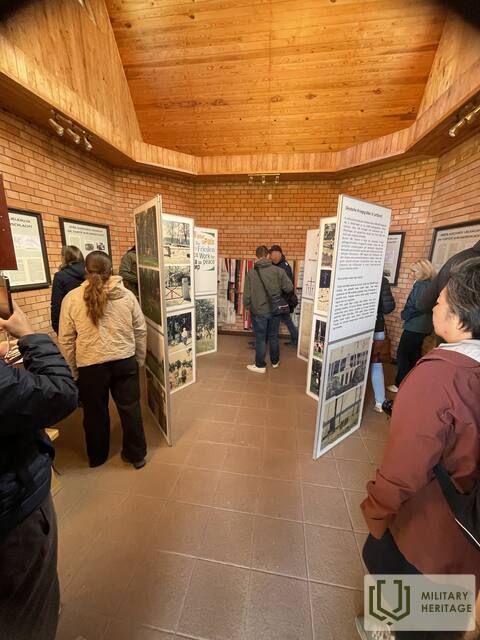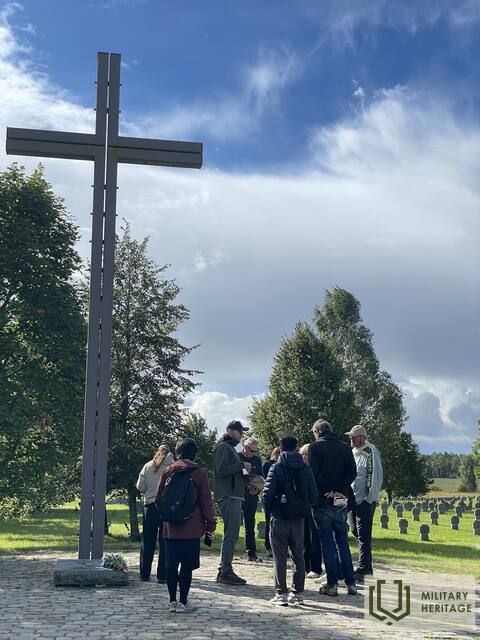Saldaus vokiečių kareivių kapinės Memorialinė vieta

Saldaus vokiečių kareivių kapinės yra prie Saldaus–Ežerės plento. Kapinėse, užimančiose 8 hektarų plotą, yra apie 25 000 vokiečių kareivių, taip pat kai kurių Latvijos legionierių palaikai. Perlaidojimai vyksta nuo 1997 m.
Nuo gegužės 1 d. iki spalio 1 d. memorialiniame kambaryje galima apžiūrėti parodą apie Kuršo mūšius. Šiuo laikotarpiu memorialinis kambarys dirba darbo dienomis nuo 9:00 iki 17:00 val., o šeštadieniais ir sekmadieniais kapinėse dirba ir gidas. Taip pat galima susipažinti su Saldaus vokiečių kareivių kapinėse palaidotų ir visoje Latvijoje žuvusių kareivių sąrašais.
Panaudoti šaltiniai ir literatūra:
https://turisms.saldus.lv/kur-doties/ko-skatit/pieminas-vietas/
Susijusi laiko juosta
Susijusi istorija
„Karas nesibaigia, kol nepalaidotas paskutinis kareivis“ (Saldus vokiečių kareivių kapinės)
Kuržemė kaip atskiras ir savitas mūšio laukas iškilo 1944 m. spalio 10 d. Buvo suskaičiuota, kad apsuptyje buvo apie 500 000 vokiečių karių. Remiantis 1-ojo Baltijos fronto štabo pranešimais, norint visiškai išlaisvinti visą Baltijos pakrantę, reikėjo tik „nedidelių pastangų“. Tačiau kovos Kurše tęsėsi dar septynis mėnesius, ir Kurše tapo Antrojo pasaulinio karo pabaigos simboliu.
Per septynis kovos mėnesius iki 1945 m. gegužės mėn. vokiečių pajėgos Kurše neteko 154 108 žuvusių, sužeistų ir dingusių be žinios kareivių. Nuo 1997 m. netoli Saldus atliktas karo kapinių tyrimas ir perlaidojami kareiviai, o šiuo metu čia galima rasti 27 000 žuvusių kareivių vardų.
Dingę vokiečių kareiviai Kuršo mūšyje - Karlas Grimmas
Vokiečių armijos grupės „Šiaurė“, vėliau pervadintos „Kurlandu“ per Kuršo apgultį, įrašuose vis dar nėra aiškios informacijos apie maždaug 50 000 vokiečių kareivių. Šie kareiviai yra įtraukti į dingusiųjų sąrašą. Net ir šiandien šių kareivių giminaičiai bando rasti savo giminaičių ir protėvių pėdsakų Kurše – tiek dokumentinių, tiek fizinių. Viena iš tokių istorijų – Karlo Grimmo, vokiečių kareivio iš Švabijos (istorinio regiono pietvakarių Vokietijoje, prie Reino ir Dunojaus upių ištakų), kurio karo karjera nutrūko 1944 m. spalio 27 d. Krūmų namuose netoli Vainodės (5 km į šiaurės vakarus nuo Vainodės, Latvijoje).
Kuršo mūšių metu dingę vokiečių armijos kareiviai - Hermanas Faulsas
Vokietijos armijų grupės „Šiaurė“, kuri vėliau, per Kuržemės apgultį, buvo pervadinta į „Kurlandą“, dokumentuose vis dar nėra aiškios informacijos apie maždaug 50 000 Vokietijos armijos kareivių. Šie kareiviai įtraukti į dingusių be žinios kovų metu sąrašą. Net ir šiandien šių kareivių giminaičiai bando Kuržemėje rasti savo giminaičių ir protėvių pėdsakų – tiek dokumentinių, tiek fizinių. Viena iš tokių istorijų yra apie Hermaną Faulą, kuris dingo nuo 1944 m. gruodžio 27 d. – 3-iojo Kuržemės mūšio, arba Kalėdų mūšių.
"Kasti geriau nei laidoti!"
Armijų grupės „Kurlandas“ įsakymas yra: „Statykite ir statykite!“ Tai užduotis kiekvienam užnugario fronto kareiviui. Tai geriausiai apibūdina žodis: „Geriau kasti, negu laidoti!“
Pieta arba „Mamos“ memorialinis ansamblis Nīkrace
Pieta, arba Mamytė, yra gerai žinomas motyvas Europos kultūroje ir mene, jis buvo naudojamas ir sovietmečiu.
Peleninė su panteros galva iš vokiečių įtvirtinimų linijų
Krotės apylinkėse buvo įsikūrusios paskutinės armijų grupės „Kurzeme“ įtvirtinimų linijos, kuriose rasta daug su Antruoju pasauliniu karu susijusių objektų.
Ezeroje kilusio Jānio Miesnieko prisiminimai apie Antrojo pasaulinio karo pabaigą Ezeroje
Ezerės kultūros istorijos ir kraštotyros muziejus „Muitinė“ įsikūręs istoriškai reikšmingame pastate. 1945 m. gegužės 8 d. čia buvo pasirašytas Kuržemės fronte apsuptų nacistinės Vokietijos armijos dalinių kapituliacijos aktas.
Buvęs Ezeras gyventojas Jānis Miesnieks (gim. 1930 m.) dalijasi prisiminimais apie tos dienos įvykius.




